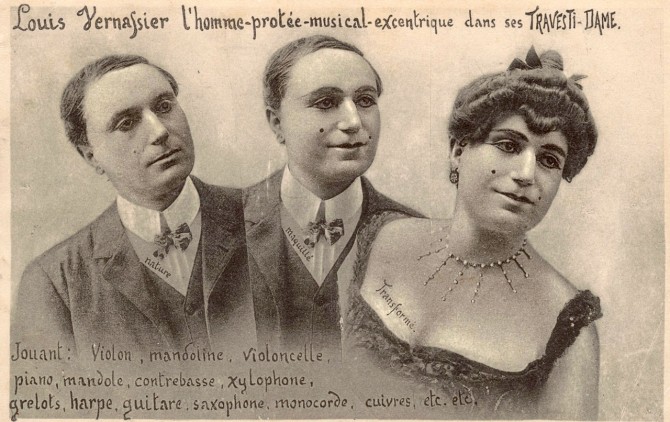Postcards from the past can deliver important lessons for the present, according to Brenda Marston, curator of the Cornell Human Sexuality Collection. Through a grants program, she collaborated with faculty members in digitizing early-20th century postcards of cross-dressers in Europe and the United States as an important resource for scholars of gender and sexuality studies, performance studies, language and literature.
A montage of three portraits of music-hall performer Louis Vernassier showing his transformation from middle-aged man to grand dame.
Cornell University Library launched the digital collection for the 50th anniversary of the Stonewall riots - a series of protests in response to the June 28, 1969, police raid of a Greenwich Village gay bar called the Stonewall Inn, which later inspired LGBTQ pride marches around the nation.
"I'm really glad to be able to put these postcards online, accessible to the world, at this time when so many people are looking back and thinking about Stonewall," Marston said.
The digitized postcards "play with depictions of race, colonialism, desire and questions related to LGBT history," according to the project description, and they feature a range of men and women performers - mostly actors, musicians and dancers - who challenged gender norms.
Human sexuality is an evolving field of inquiry, Marston said.
"I started building the Cornell Human Sexuality Collection in 1989, the 20th anniversary of Stonewall," Marston said, "and I'm excited to imagine 50 years from now what my successors will be collecting about this endlessly fascinating topic."
View the postcard collection online.
- Jose Beduya







